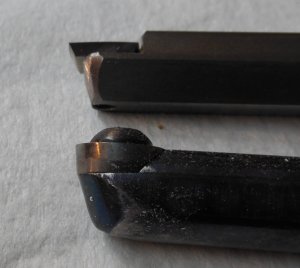Hula daddy
Member
I am trying my first attempts at turning some acrylic pens. I bought 5 blanks from the $1.89 bin at woodcraft. I have tried 4 of the and all 4 shattered while turning.
I have used new blades on the woodchuck so I am sure the blade is shape. each one is getting closer as I use lighter and lighter touches.
My question is could it just cheap acrylic or is it me?
thanks Brian
I have used new blades on the woodchuck so I am sure the blade is shape. each one is getting closer as I use lighter and lighter touches.
My question is could it just cheap acrylic or is it me?
thanks Brian

